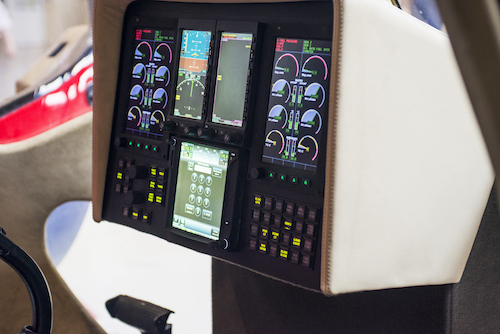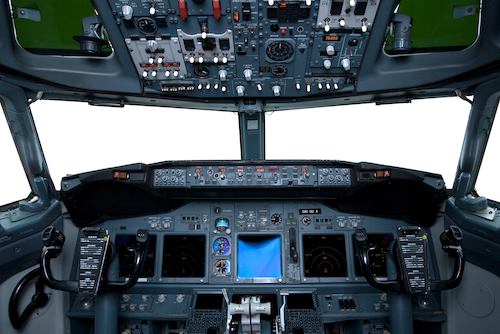Published on January 26, 2022, Updated on January 26, 2022
Advances in Avionics Require Manufacturing Updates in Washington
Whether you make aeronautical equipment for private civil aviation, commercial aviation, military uses, or a combination of the three, your customers in Washington are going to want you to keep up with the latest advances. This implies that updates and retrofits must be implemented on a regular basis in order to keep up with the latest avionics developments.
It also implies that you may have a backlog of produced components that are no longer usable due to being out of date. Fortunately, 1 Green Planet in Washington can manage large-scale product de-manufacturing. Our procedures are safe, verified, and require very little time. More about us.
The following are a few instances of avionics breakthroughs that have occurred in recent decades to demonstrate how the field evolves.


Manual Flight Controls Versus Fly-by-Wire Washington State
Flight control systems were originally mechanical in nature. The movements of the controls have a direct impact on the plane’s movement. Pilots may then immediately experience the impacts via the controls. This is the most basic technique of flight control, and it was used on the first planes.
Mechanical flight control, on the other hand, presented certain challenges. It can lead to potentially dangerous situations such as pilot-induced oscillation, spinning, stalling, and a restricted capacity to adapt for changing aerodynamic circumstances. In order to address these concerns and improve safety, manual controls underwent a thorough evolution that incorporated hydraulics and mixed hydro-mechanical systems. Mechanical flight control, on the other hand, presented certain challenges. It can lead to potentially dangerous situations such as pilot-induced oscillation, spinning, stalling, and a restricted capacity to adapt for changing aerodynamic circumstances. In order to address these concerns and improve safety, manual controls underwent a thorough evolution that incorporated hydraulics and mixed hydro-mechanical systems.
Mechanical flight control, on the other hand, presented certain challenges. It can lead to potentially dangerous situations such as pilot-induced oscillation, spinning, stalling, and a restricted capacity to adapt for changing aerodynamic circumstances. In order to address these concerns and improve safety in Washington, manual controls underwent a thorough evolution that incorporated hydraulics and mixed hydro-mechanical systems.
- Fly-by-wireless
- Power-by-wire
- Fly-by-optics
- Intelligent flight control system
Mechanical Gauges Versus Glass Cockpit
Analog gauges and dials are used in traditional flying displays. These provide the pilot with critical flying data like height, speed, pressure control, flow rates, and so on. These can be challenging for a pilot to focus on quickly in order to obtain the most important information. The military began developing so-called glass cockpits in the 1960s and 1970s, which employ air data processors instead of traditional gyroscopic flying instruments and a multi-function display controlled by a flight management system.
A MFD, also known as a multi function electronic display subsystem, is simpler for a computer-literate generation of pilots to grasp. It enables pilots to pull up flight information on an LCD screen as needed, helping them to focus more readily on the data that is most important at any given time. A MFD, also known as a multi function electronic display subsystem, is simpler for a computer-literate generation of pilots to grasp. It enables pilots to pull up flight information on an LCD screen as needed, helping them to focus more readily on the data that is most important at any given time.
ACAS Versus ASAS
A mid-air collision between two airplanes can be disastrous in terms of possible lives, injuries, and property damage. Pilots rely on air traffic control instructions to avoid collisions, but because prevention is so important, planes are also outfitted with autonomous airborne collision avoidance systems. When a danger is recognized, these ACAS systems initiate a movement to lessen the likelihood of a crash. There are many different types of ACAS systems since there are many different types of aircraft. They are supposed to fulfill Federal Aviation Administration and/or International Civil Aviation Organization requirements.
While ACAS alerts an airplane when another craft is in its near vicinity, an airborne separation assurance system operates over a longer distance to maintain standard separation between various craft while they are on the move. Originally, ASAS was considered a subset of ACAS, but a difference is being drawn between the two.
Serving Washington DC for Over Two Decades
When it comes to the disposal near Washington, of obsolete aircraft components, 1 Green Planet complies completely with the National Security Agency, the Department of Defense, and all other applicable legislation. We are EPA, R2, and ISO 140001 certified. For additional details, please contact us right away.
Some of the Aerospace Equipment Managed by 1 Green Planet in Washington
Aircraft SATCOM Antennas
Communications & navigation systems
Approach & Navigational Aids
Autopilot systems
Cockpit displays
FADEC engine controls
Aircraft Passenger and Crew Power
Dual Sensor EVS
Airfield Guidance Signs
Military training services and equipment
Cockpit Controls & Panels
Aircraft Interface Devices (AID)
IFEC Embedded System Hardware
Avionics I/O Computers
Passenger service units
Radar systems
Avionics suites
Aircraft Radomes
In-flight entertainment displays
Autopilot & Radar Systems
Aerospace Electronics Systems
Environmental control systems
Circuit boards
Drone Aircraft









